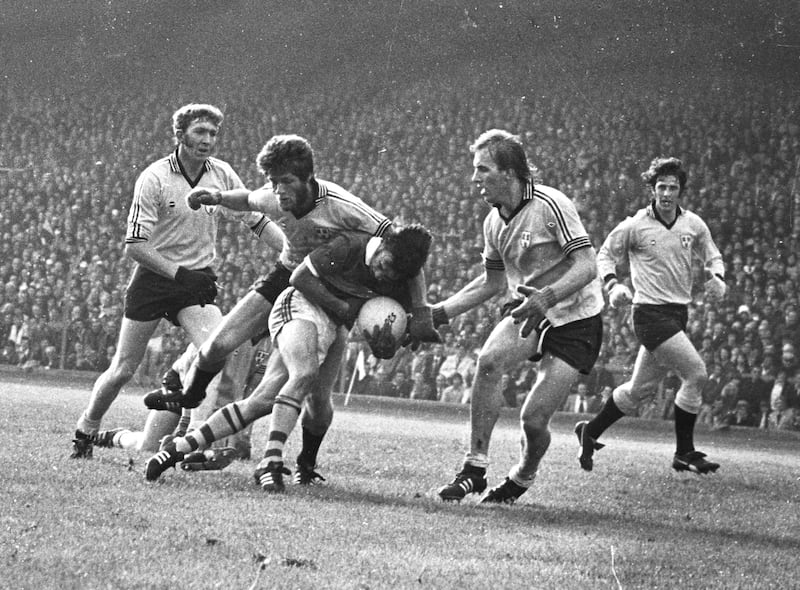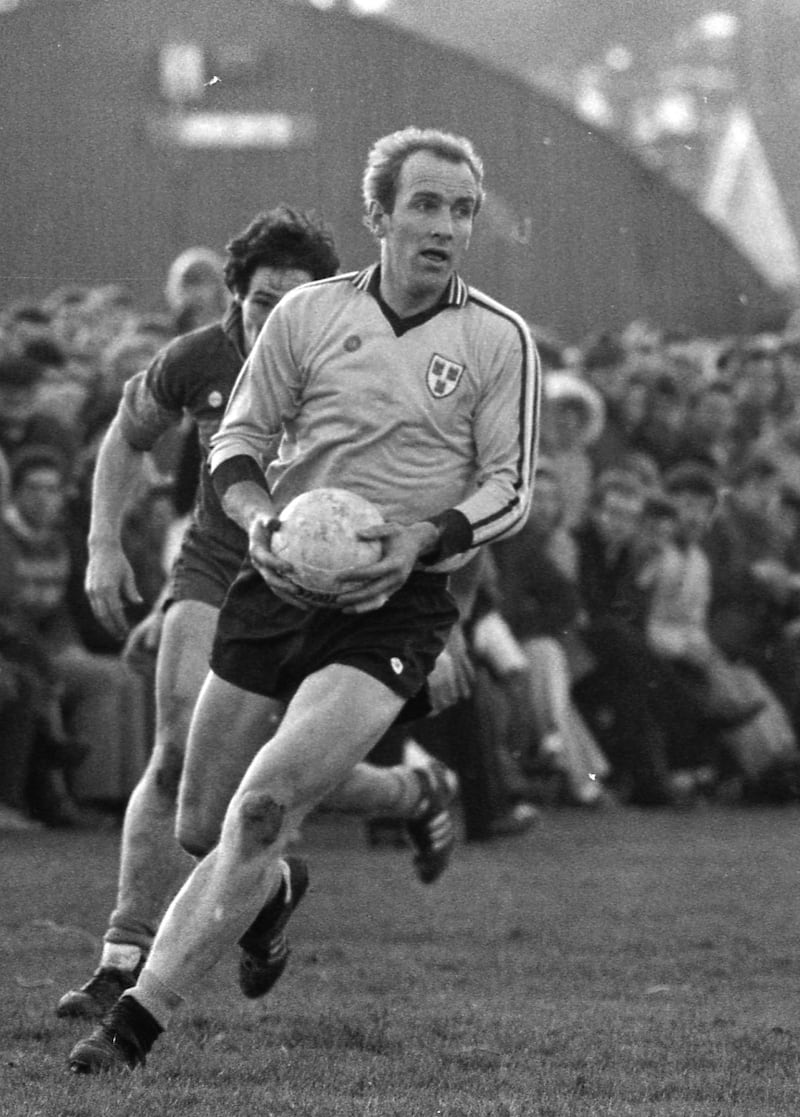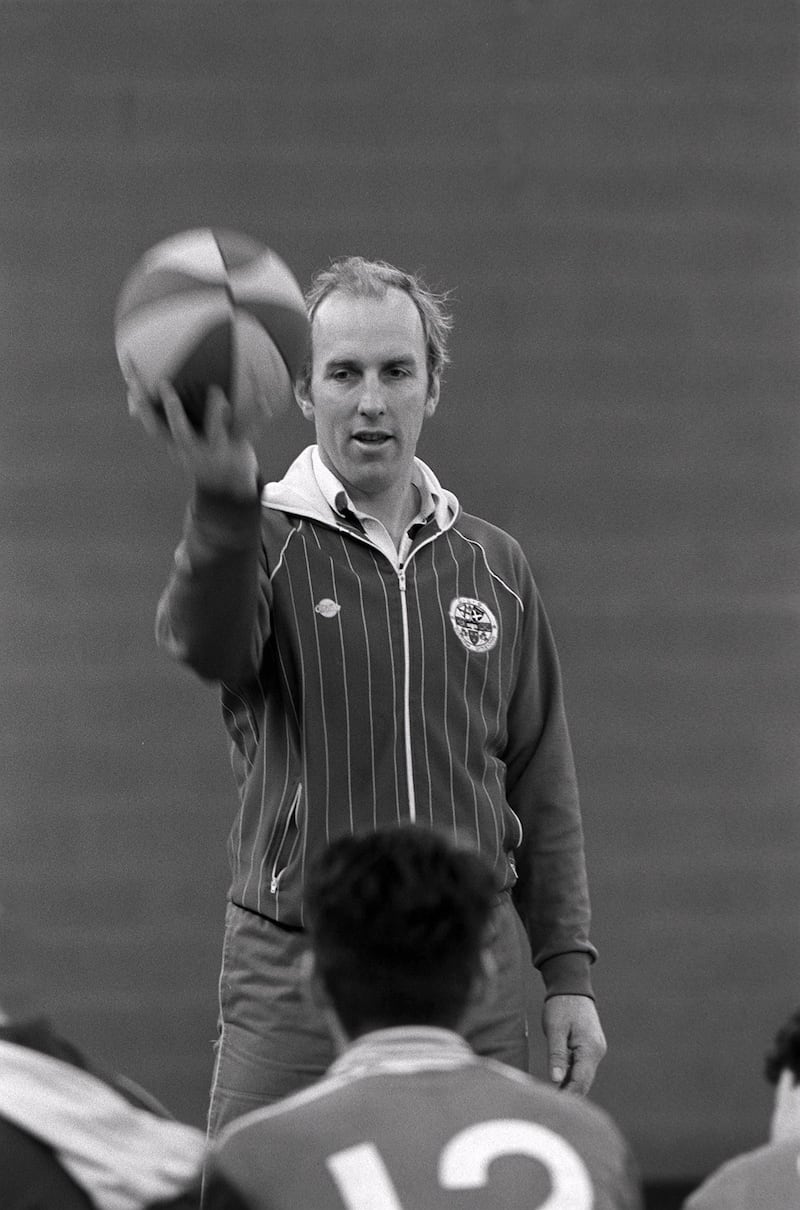The death has taken place of Brian Mullins, one of the most influential players in the history of Dublin football. News of his passing just days after his 68th birthday and after a short illness emerged on Friday afternoon.
His death is a particularly poignant loss for one of Irish sports’ most famous teams. He was the youngest member of Kevin Heffernan’s Dublin side, who swept from nowhere in the summer of 1974 to reclaim the All-Ireland after a gap of 11 years and also to establish the great modern tradition of Gaelic games in the capital.
His playing career spanned all four of the All-Ireland victories of the era under the management of Heffernan and, in 1977, Tony Hanahoe.
From a few days short of his 20th birthday in the 1974 final against Galway to his last appearance on the big stage 11 years later, a final renewal of the great rivalry with Kerry, Brian Mullins had come to typify the modern, athletic, driven centrefielder.
The age of rugby imperialism is here, and Ireland must realise we sit with the ‘Have-nots’
Italy match gives Ireland ‘massive opportunity’ to turn bad day into start of better times
Think you know when it’ll be time to tell Bundee Aki and Tadhg Furlong to step aside?
A toxic generation of parents is spoiling sport for US children

For Pat O’Neill, a team-mate and later manager of Dublin’s 1995 All-Ireland success, the teenage rookie was an important part of that memorable summer’s revolutionary equation.
“There was significant change in our performance levels, driven by the return of Kevin Heffernan but also the arrival of Brian on the team. He was a tremendous workhorse as well as being a talented footballer — big, strong and athletic. He’d go in anywhere and actually got a lot of scores, including important goals.”
[ GAA world mourns death of Dublin colossus Brian MullinsOpens in new window ]
By the end of September 1974, Dublin had confounded what started the season as a blissfully unaware football public by reaching the All-Ireland final. Mullins had the misfortune to get injured in an under-21 match a few weeks previously.
“In the lead-up to the final in ‘74, he injured his ankle,” remembers O’Neill. “I remember I was an intern in the Mater and Paddy McAuley was the orthopaedic surgeon and quite pessimistic about Brian’s prospects but Kevin kept saying to me: ‘He has to be right. He has to be right.’
“He had become that important to the new equation.”
“In the end, he played and played very well. Himself and David Hickey were probably our best players.”
Growing up in Clontarf, Mullins was by his own account immersed in sport between rugby, soccer, swimming, hurling, football, cricket, tennis and running — and not just at recreational level. He played on a famous Leinster under-19 rugby team with people like future internationals John Robbie.
The story is told of how, having returned from Belfast and a win over Ulster in which he, playing second row, had scored a try, Mullins was wished good luck by Robbie as he was debuting for the Dublin seniors the following day at full forward in a tournament match.
Michael Hickey, a brother of David and who would himself play for Dublin, was also on the Leinster team. Later, remembered the occasion.
“He said, yeah, he was playing his first game for the Dublin footballers. That was spring and we thought he was mad. The day after an interprovincial game, going playing Gaelic football. By September, he had an All-Ireland medal.”
In interview earlier this year with Marie Crowe on RTÉ’s We Become Heroes podcast, Mullins also cited the influence of Clontarf cricket coach and Ireland international Robin Waters.
The big influence on his sporting career was without doubt Kevin Heffernan, who took a big interest in Mullins’s career from the time he arrived in St Vincent’s.

Twenty years after the phenomenon of Heffo’s Army, in 1994 he wrote in the Sunday Times about how the Dublin manager had subjected them to a gruelling physical training regime with the purpose of making them the fittest team in the country.
The point made was a timeless distillation of the impact of good management. In those days the GAA, in an eccentric initiative, had extended matches from an hour to 80 minutes — a 33 per cent increase in playing time. Dublin’s new fitness levels proved useful and Mullins noted that it dawned on players that, “Everything he said would happen as a result, did happen.”
He was widely acknowledged to be — at least — one of Heffernan’s favourite players. David Walsh, whose Return to the Hill, published in Magill magazine in January 1989, remains the foundation text of Dublin’s resurgence, said afterwards that you could tell the manager “loved Mullins” and his dynamism and sheer cussedness.
“Kevin was very fond of him,” says O’Neill.
He repaid that trust with a huge contribution to Dublin’s decade. It wasn’t just the physical attributes: fielding the ball, as in the stunning photograph of him and Kerry’s Seán Walsh rising into the stratosphere; relentless movement, the strength to be at a young age an enforcer as well as a scorer, as in his goal in the 1976 final.
For such an athlete, fate dealt him the ultimate bad hand in 1980 when at the age of 25 a car crash left him with serious injuries just as he was planning for a leave of absence from his teaching career to pursue an MA in athletics administration in New York University.
“I got a call to go the Mater at three or four in the morning,” recalls Pat O’Neill, “even though it wasn’t my hospital by then and he was there. At the time I think he was gearing up to go to America.
“By the time that [going to the US] happened, I was in the Middle East but I remember visiting New York when he was there, working in Rosie O’Grady’s — with a limp! — and he asked me to come to talk to his orthopaedic surgeon. It was very tough for him. How he made it back to intercounty football was extraordinary. He was obviously affected but watching him in the Cork replay [1983] you wouldn’t have noticed.”

But make it back, he did. There are few more striking examples of complicated redemption than Mullins’s return to the Dublin team, at that stage like Oisín in ndiaidh na Féinne as most of the 1970s crew had retired.
Most reference his performance in that famous 1983 Páirc Uí Chaoimh replay — Dublin had been lucky to secure a draw in Croke Park — but he preferred that year’s Leinster final when the team overturned a nine-point defeat by Offaly the previous year to beat the then All-Ireland champions.
He was upset after the 1983 All-Ireland final win over Galway, having been one of four players sent off in a crazy maelstrom of a match. For all that he had a justified reputation for truculence, especially with media, throughout his playing career, Mullins had a thoughtful, sensitive side, as revealed in Walsh’s Magill portrait.
He gave his All-Ireland medals away, the first to his mother, a sister of Kerry All-Ireland winner Bill Casey, and the second and third to other family members and his fourth to the 1985 Live Aid auction, where it realised £2,500.
His career was always in education as a teacher and principal, which brought him to Donegal in the 1990s, as he took over Carndonagh Community School. There were two football-related consequences of note. His son Nathan was qualified for Donegal and played for the county for a while.
Secondly he managed nearby Derry for three years, winning a national league in 1996 and an Ulster title two years later.
On his return to Dublin in 2000, he succeeded the late Dr Tony O’Neill as head of sport in UCD. “He was very important to Gaelic games in the college,” according to Nicky English, who coached the college’s hurlers for a number of years.
“He worked closely with Dave Billings and Ger Brennan and having a voice at the top table in any big organisation is always an advantage but that’s because hurling was my focus. I think he related well to all sports because of his background.”
Not the most comfortable in discussing his ‘legacy,’ he did share an insight on We Become Heroes into his motivation as a player, which strikes a modern chord.
He saw his role as “adding value to the collective” and trying to identify and manage the opposition’s biggest threat to his team.
Brian Mullins leaves a football world transformed from the 1970s. And there is a legacy in Dublin’s contemporary status as well as the popularity of Gaelic games in the city thanks to the tumultuous era he did so much to contribute to and maintain.
















